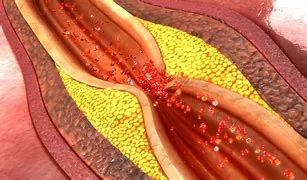Myocardial bridging is a cardiac condition that involves the coronary arteries, specifically the left anterior descending (LAD) artery, which is a critical blood vessel supplying oxygen-rich blood to the heart muscle. In some individuals, a segment of the LAD artery may be compressed or tunneled through the myocardium (heart muscle), leading to a condition known as mid LAD myocardial bridging. This phenomenon can have varying degrees of clinical significance and may present challenges in diagnosis and management. In this article, we will delve into the intricacies of mid LAD myocardial bridging, including its pathophysiology, clinical manifestations, diagnostic approaches, and treatment options.
Anatomy and Pathophysiology
The LAD artery is one of the major coronary arteries responsible for supplying oxygenated blood to the front and left side of the heart. In myocardial bridging, a segment of the LAD artery takes a path underneath the myocardium instead of running on its surface. This can occur due to variations in coronary artery anatomy and the development of the heart during embryogenesis.
When the LAD artery tunnels through the myocardium, it becomes susceptible to compression during cardiac contraction, especially during periods of increased myocardial demand such as exercise or stress. This compression can lead to reduced blood flow through the affected segment, potentially causing myocardial ischemia (inadequate blood supply to the heart muscle).
Clinical Manifestations
The clinical presentation of mid LAD myocardial bridging can vary widely. Some individuals may remain asymptomatic, with the condition being incidentally discovered during cardiac imaging studies or autopsy. However, others may experience symptoms related to myocardial ischemia or coronary artery spasm.
Common symptoms associated with mid LAD myocardial bridging may include:
- Chest pain or discomfort, particularly during exertion.
- Shortness of breath, especially with physical activity.
- Palpitations or irregular heartbeats.
- Fatigue or weakness, especially during periods of increased cardiac demand.
It’s important to note that not all individuals with mid LAD myocardial bridging will experience symptoms, and the severity of symptoms can vary significantly among affected individuals.
Diagnostic Evaluation
The diagnosis of mid LAD myocardial bridging often involves a combination of clinical assessment, non-invasive imaging studies, and occasionally, invasive coronary angiography.
1. Clinical Assessment: Healthcare providers will review the patient’s medical history, including any cardiac symptoms, risk factors for coronary artery disease, and family history of cardiovascular conditions.
2. Non-Invasive Imaging:
- Echocardiography: This ultrasound-based imaging technique can visualize the LAD artery and assess for any abnormalities such as myocardial bridging.
- Computed Tomography Angiography (CTA): CTA provides detailed images of the coronary arteries, allowing for the detection of myocardial bridging and assessment of its severity.
- Cardiac Magnetic Resonance Imaging (MRI): MRI can also be utilized to evaluate myocardial bridging and assess myocardial perfusion.
- Invasive Coronary Angiography: In some cases, coronary angiography may be performed to directly visualize the LAD artery and assess the degree of myocardial bridging. This procedure involves the insertion of a catheter into the coronary arteries under X-ray guidance.
Treatment Options
The management of mid LAD myocardial bridging depends on several factors, including the presence and severity of symptoms, extent of myocardial ischemia, and overall cardiovascular risk profile.
1. Medical Therapy: For asymptomatic individuals or those with mild symptoms, conservative management with medications such as beta-blockers, calcium channel blockers, or nitrates may be sufficient to alleviate symptoms and improve myocardial perfusion.
2. Lifestyle Modifications: Encouraging a heart-healthy lifestyle, including regular exercise, a balanced diet, smoking cessation, and stress management, is crucial for overall cardiovascular health and may benefit individuals with mid LAD myocardial bridging.
3. Interventional Procedures: In cases where symptoms are severe or refractory to medical therapy, interventional procedures such as coronary stenting or surgical myotomy (surgical division of the myocardial bridge) may be considered. However, these interventions are typically reserved for select cases due to associated risks and potential complications.
Prognosis and Follow-Up
The long-term prognosis of mid LAD myocardial bridging is generally favorable, especially in asymptomatic individuals or those with mild symptoms. However, close monitoring and regular follow-up with healthcare providers are essential to assess symptom progression, evaluate treatment efficacy, and address any potential complications.
Conclusion
Mid LAD myocardial bridging is a complex cardiac condition that requires a multidisciplinary approach for accurate diagnosis and optimal management. By understanding its anatomy, pathophysiology, clinical manifestations, diagnostic modalities, and treatment strategies, healthcare providers can effectively care for individuals with this condition and improve their cardiovascular outcomes.

